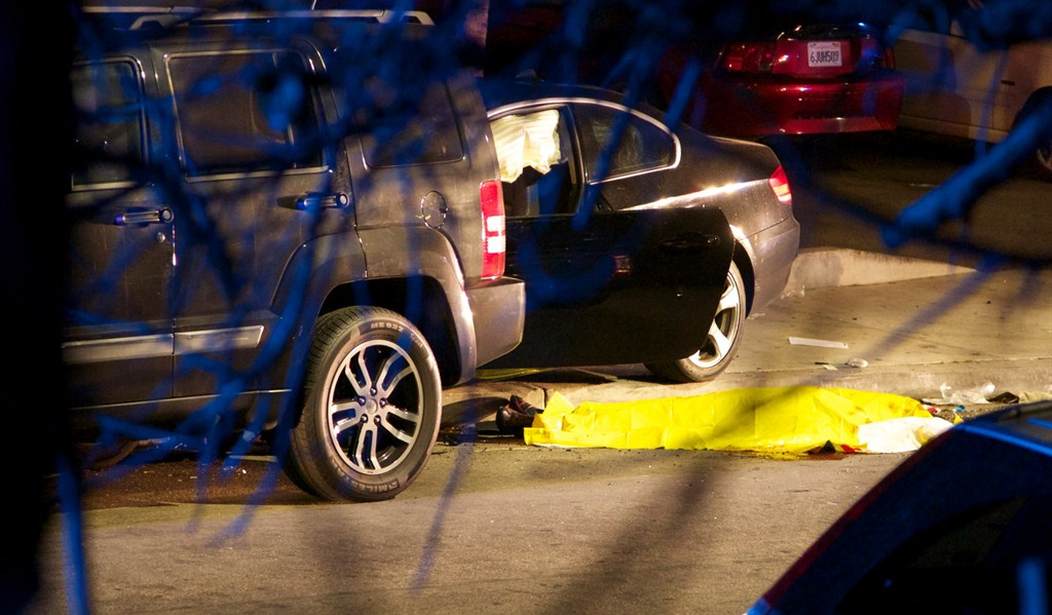Awkwardness and social ineptitude with the opposite sex are common among young men; for all their bravado and bro-ness, a young man can literally shake in his shoes just asking a woman out on a date. But most young men aren’t violent, let alone killers who take out their frustrations on others because of their underdeveloped dating skills.
The 2014 Isla Vista killings were committed by a young involuntary celibate (“incel”) loser, who was frustrated at his inability to find a girlfriend and establish a healthy relationship with a woman. The killings were the culmination of the jealous perpetrator seething for several years, whose violence began with low-scale attacks on young couples and women.
The killings resulted in 6 deaths, of which 3 were stabbings. The perpetrator also used his car to ram pedestrians randomly. He shot and killed 3 innocents. Yet, this hybrid attack is repeatedly publicized by the media and gun control advocates (I repeat myself) as a mass shooting. If you follow the FBI’s longstanding standard definition of a mass shooting as involving 4 or more victims shot to death, Isla Vista doesn’t even fit the criteria.
We remember the victims killed & injured in the shooting in Isla Vista, California on this day in 2014. Our hearts are with their families and the community.#Remembrance #EndGunViolence #HonorWithAction pic.twitter.com/x5bzDswdQN
— Sandy Hook Promise (@sandyhook) May 23, 2024
Sandy Hook Promise deceptively talks about the 3 shooting deaths, but includes the pictures of 3 stabbing victims to essentially double the perception. They don’t mention the stabbings or the fact that a car was also involved. Vehicle ramming attacks can be very deadly, as we saw from the 8 deaths in Brownsville, TX or 6 deaths in Waukesha, WI.
Mother Jones did a long-form article (archived link) on the efforts of the perpetrator’s mother to prevent another mass attack, but again, they headline the 50-50 stabbing-shooting attack as a “mass shooting”:
Lessons From a Mass Shooter’s Mother
[...] perpetrated a horrific massacre, one that still stands apart in America’s epidemic of mass shootings. The case would be documented extensively by investigators and play a unique role: Its unusual range of evidence would show experts more about what leads to such attacks and help advance a growing field of violence prevention. [...]
Before the sun went down on May 23, 2014, [...] ambushed three college students inside his rental apartment in central Isla Vista, stabbing them to death with fixed-blade hunting knives. Two of the victims were his roommates: [...] violence escalated with each victim, stabbing them 15, 25, and 94 times. He covered the first body, and then the second, with blankets and clothing, likely to preserve his element of surprise. [...] Or maybe the lack of notice was explained by the search history investigators found on his laptop: “Quick silent kill with a knife.”
I was unaware of the below detail in the perpetrator’s plan. He had also intended to commit arson. Fire can kill a LOT of people, very quickly. The Happy Land Nightclub arson attack killed 87 people, for instance.
He walked up to the front door, wearing extra ammunition strapped to his waist and carrying a filled gas can. [...] In a fortunate twist of fate, about 40 of the residents were away on a trip to Las Vegas, and the remaining handful felt wary enough not to answer.
This was when the perpetrator started using his car and his gun:
He left the gas can at the door, went back to his car, [...] rolled up on them from behind with the passenger-side window down and opened fire.
Then he headed for the nearby oceanfront neighborhood, ramming people and firing more shots on his way to the party epicenter of Del Playa Drive. He plowed into some victims with enough force to shatter his windshield and catapult them to the pavement.
This was a meticulously planned attack with several methods involved: stabbing, arson, vehicle ramming, and guns. When cornered, like most mass killers, the perpetrator took the coward's way out because there was armed resistance.
But the focus is always misplaced on guns, because a big subset of the country hates guns and doesn’t like the basic concept of an armed citizenry:
Though he also used knives and a car, [...] wrote that his “main weapons” for vengeance would be guns. Like most mass shooters, he purchased them easily and legally.
His case became key to the rise of so-called red flag laws, which allow a civil court to order the temporary removal of access to firearms based on evidence that a person poses danger to themself or others.
After describing the multi-mode attack, the article ironically misses the point about red flag laws. Seizing a potential perpetrator's guns isn't enough when other deadly options are available.
The article goes on to talk about the ineffectiveness of red flag laws in the Buffalo, NY and Lewiston, ME attacks, both of which showcase the failures of the government to stop individuals who had mental health breakdowns and were clearly reported to the authorities by their families and friends.
Violence prevention across the board is something gun rights advocates would be happy to collaborate on; we aren’t the selfish ghouls gun controllers caricature us as. But the focus on guns comes across as dishonest and insidious to us, and for a good reason.









Join the conversation as a VIP Member